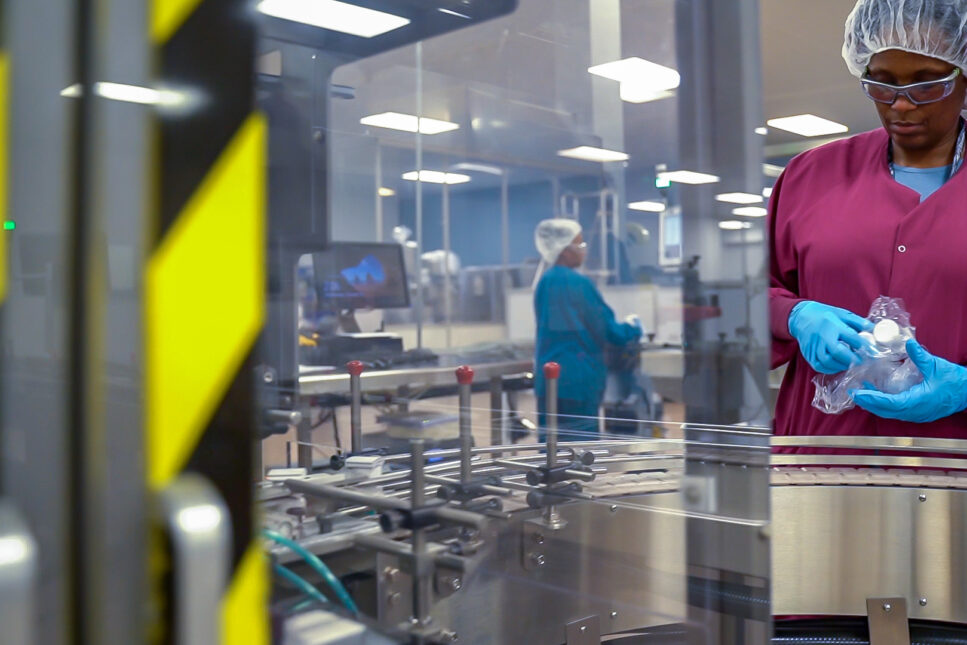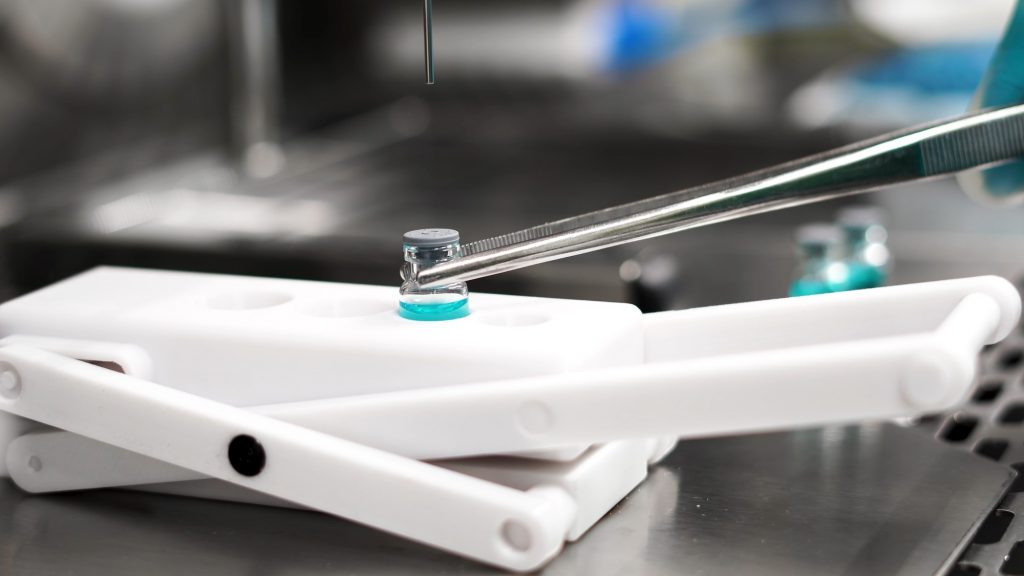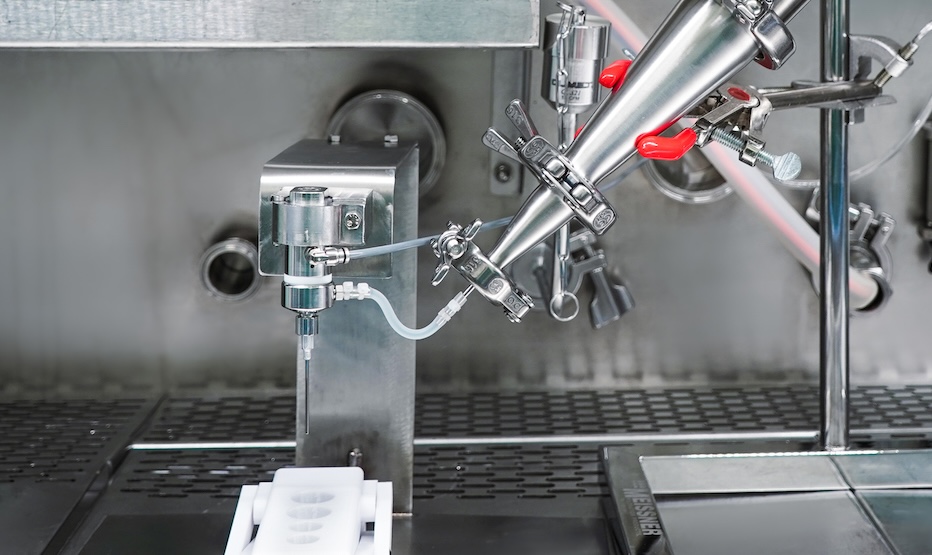In the pharmaceutical industry, 2023 was a year that marked significant milestones and pivotal shifts in treatment modalities. Trends emerged that promise to reshape the future of drug development, manufacturing, and distribution.
In a recent roundtable discussion, Alexander Schäfer, Business Development Manager, Sharp Europe; Mike MacNeir, VP Business Development, Sharp Clinical; Jeff Livick, Business Development Director, Sharp US; discussed the emerging trends in the pharma industry that Sharp witnessed as a global leader in commercial pharmaceutical packaging and clinical trial supply services in 2023. They also commented on predictions for 2024.
Highlights of 2023
Reflecting on the past year, the standout highlights of 2023 were:
Alexander Schäfer: This year marked a pivotal moment for Sharp as our prior strategic investments came to fruition. The success we experienced this year validates our investment decisions regarding expanding capacities and capabilities. Particularly noteworthy was the acquisition of Berkshire Sterile Manufacturing, which marked our entry into the sterile fill/finish market—a move that perfectly complements our existing service offerings and will contribute to our future success.
Mike MacNeir: Within our clinical sector, we witnessed a notable shift in demand toward packaging vials and syringes – a market valued at 8.2bn in 2022 and predicted to reach 14.23bn by 20311. This trend has become a substantial portion of Sharp’s clinical business, indicating a market trend towards these services. Moreover, the burgeoning need for gene therapy packaging compels us to continuously evolve our offerings to meet this demand.
Jeff Livick: Sharp had an excellent year in 2023 in terms of delivering to our client’s high expectations. Our clients outsource their packaging projects to us as trusted experts in the industry with a proven ability to deliver on time and in full. Each of our facilities was challenged to deliver significant product volumes throughout this year and it was a real highlight to see those targets achieved and, in many cases, surpassed. We were united in our commitment to our clients, to deliver their drug products to the patients that need them.
Key trends impacting the pharmaceutical sector
Examining the landscape of the pharmaceutical industry, significant trends that have made a considerable impact include:
Alexander Schäfer: The injectables market experienced significant growth, emphasizing the importance of providing robust solutions for injection devices – the generic injectables market alone is expected to have grown from $94.86 billion in 2022 to $109.42 billion in 20232. Despite this growth, challenges within the cell and gene therapy industry resulted in program failures. There is also a need for adaptability and responsiveness in supply chain capacity as market demand can shift at relatively short notice, such as the repurposing of COVID-19 vaccine capacities that became a major focus last year. Furthermore, there’s an emerging need for flexible packaging solutions, especially for orphan drugs and smaller-scale projects.
Mike MacNeir: Mergers and acquisitions have been driving substantial changes. With several blockbuster drugs nearing patent expiration, the anticipation of a $700 billion surge in M&A activities looms large. Big Pharma’s closure of internal manufacturing sites has subsequently led to increased volumes being outsourced to entities like Sharp.
Jeff Livick: Therapeutic areas like GLP1 products and biosimilars are gaining traction. Moreover, the implementation of artificial intelligence (AI), personalized medicines, and the ever-evolving regulatory landscape are pivotal areas that are expected to shape the industry’s direction.
Emerging technologies in pharmaceutical manufacturing
The emergence of cutting-edge technologies has significantly reshaped the landscape. Some notable trends in this area include:
Alexander Schäfer: The industry’s focus on sustainability is evident in exploring mono-material packaging solutions as well as innovative alternative materials for plastic components. This will be a long-term focus for our industry, as sustainability responds to with the growing environmental imperative across all industry sectors.
Mike MacNeir: Sharp is at the forefront of innovation with tools like Clinvista forecasting, aimed at providing more accurate projections for supply chain management. The goal is to minimize waste and optimize resources, especially when dealing with limited or costly quantities of products involved in complex trials.
Jeff Livick: Automation is also gaining prominence, with Sharp’s Dividella lines offering clients automated systems to enhance efficiency and minimize the possibility of quality deviations.
Sustainability and environmental responsibility moving into 2024
As the industry moves into 2024, the focal shift towards sustainability and environmental responsibility is gaining momentum:
Alexander Schäfer: The pharma industry has to adapt to support a more sustainable future. It has become an imperative for Sharp, demonstrated through hiring a dedicated Global Sustainability Manager for the business in 2023. This move reflects our commitment to align with our customers’ growing emphasis on environmental sustainability and collaborating to identify and implement viable, eco-friendly packaging solutions.
Mike MacNeir: Our teams are increasingly aware they need to help clients reduce the carbon footprint of their projects where possible. This includes supporting them with optimizing shipping methods for example. Our facility managers are also integrating more sustainable energy practices within their operations across our facilities. Awareness is increasing across our business that this is now imperative to how we operate.
Jeff Livick: Our focus is not just insular, but understanding we need to act as part of a collaborative supply chain. As a co-founder of the Alliance to Zero, Sharp is actively involved in a non-profit initiative aimed at transitioning the pharmaceutical sector towards net-zero emissions, emphasizing our dedication to environmentally responsible practices along with our partners and suppliers.
AI in pharmaceutical operations
The integration of AI stands out as a transformative force in pharma, shaping processes and efficiency. The role of AI in 2024 looks to be notable:
Alexander Schäfer: The potential impact of AI on drug research is immense, and its integration into pharmaceutical development processes could revolutionize the industry’s approach to innovation.
Mike MacNeir: AI’s role in expediting clinical trial timelines and enhancing supply chain efficiency is crucial for ensuring our clients’ success in an increasingly competitive landscape.
Jeff Livick: Collaborations between pharmaceutical companies and AI-focused entities signify a growing trend in leveraging AI for drug development. Examples like Merck KGaA’s partnerships highlight the industry’s move toward embracing AI for enhanced research and development efforts.
Reflecting on 2023 and moving forward into 2024
In the pharma industry, 2023 can be defined as a year marked by strategic successes, industry-shaping trends, technological advancements, sustainability initiatives, and the increasing integration of AI in pharmaceutical operations. Sharp’s proactivity in embracing these shifts pushes the company to the forefront of innovation, ready to meet the evolving needs of the pharmaceutical sector in 2024 and beyond.





